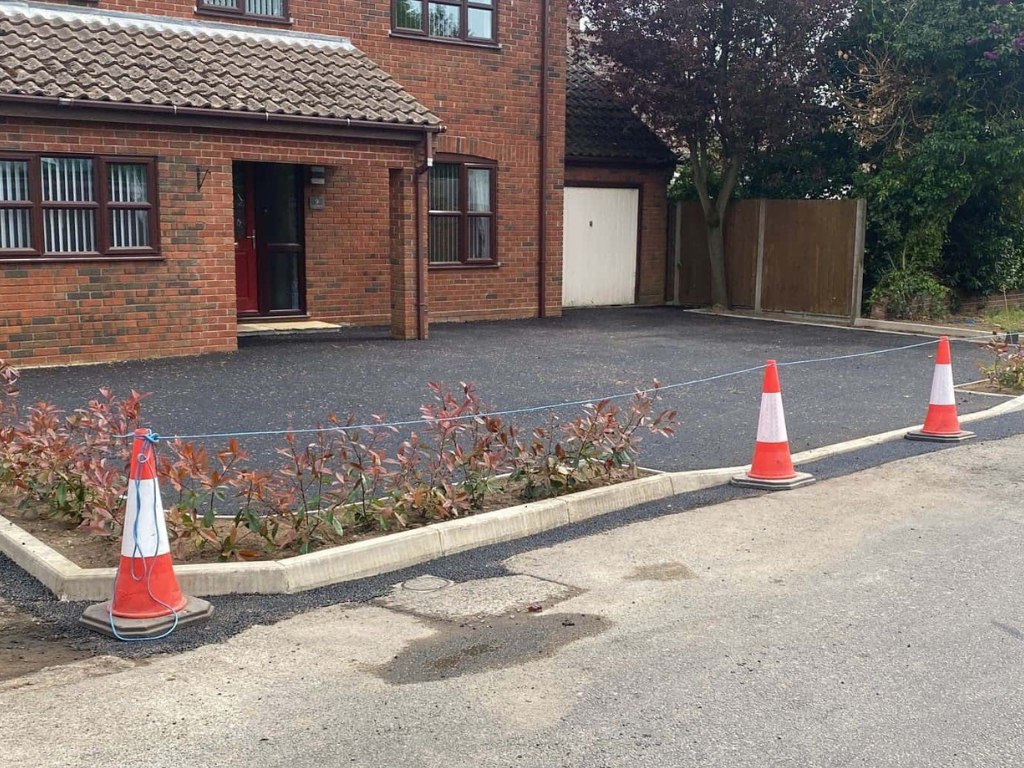How to Identify Surface Damage in Older Tarmac and When to Repair It
Introduction
Tarmac driveways are valued for their durability, practicality, and smooth finish—but even the most well-laid surface will show signs of wear over time. Whether it’s cracking, fading, or subsidence, older tarmac can quietly degrade, leading to larger issues if not addressed promptly.
At NS Driveways Caterham, we’ve worked with countless homeowners and businesses across Caterham and Surrey, helping them assess and restore ageing tarmac surfaces. In this article, we’ll explain how to identify surface damage in older tarmac and when it’s time to repair, resurfacing, or replace altogether.
Key Takeaways
- Surface damage often starts subtly – spotting it early prevents costly repairs
- Common issues include cracks, raveling, discolouration, and edge breakdown
- Prompt, professional repairs can restore structure and prolong lifespan
- Left untreated, minor flaws can lead to water ingress, potholes, and base failure
Early Signs of Wear: What to Look For
Tarmac doesn’t typically fail overnight. Instead, its surface slowly breaks down due to exposure to weather, vehicle traffic, and age. Here are some early indicators that your tarmac may be deteriorating:
- Fine surface cracks: These hairline fractures often appear first and may look harmless, but they allow water to seep below the surface
- Faded or greyish colour: UV exposure bleaches the top layer over time, signalling that the surface binder is weakening
- Loose stones (raveling): If aggregate is coming loose, your driveway is losing its structural cohesion
- Edge crumbling: The borders of driveways take the most pressure and often break down faster than the centre
Recognising these signs early allows for targeted patching or sealing, avoiding more extensive repairs later.
When Surface Damage Becomes Structural
Superficial damage becomes more serious when water gets into the sub-base. This often happens in freeze-thaw conditions or when drainage is poor. Watch for:
- Widening cracks or holes: These often signal that the layers beneath are beginning to shift or collapse
- Puddling or standing water: If water lingers, it’s a sign your tarmac is no longer draining as designed
- Sinking or depressions: This indicates a failure in the sub-layer, often due to compaction loss or water damage
- Potholes: The final stage of neglect – once a pothole appears, it requires immediate repair to avoid further crumbling
At this point, surface treatment alone isn’t enough. You may require re-levelling, resurfacing, or even partial reconstruction depending on the severity.
Professional Repair vs Full Resurfacing
Not all damage means a full replacement. At NS Driveways Caterham, we assess the condition and recommend the most cost-effective solution.
Suitable for Repair
- Localised cracking or minor settlement
- Faded colour or early raveling
- Small areas of edge damage
Fix: Patch repairs, crack sealing, or surface dressing to restore appearance and function
Requires Resurfacing
- Widespread cracking or water damage
- Uneven surfaces across the driveway
- Drainage failure or persistent puddling
Fix: A new tarmac overlay or removal of the top layer, followed by fresh surfacing to restore strength and level
Maintenance Tips to Avoid Future Damage
Prevention is always better than cure. To extend the life of your tarmac:
- Clear leaves and debris regularly to prevent moss and drainage issues
- Keep gutters, channels, and drains clear
- Address small cracks as soon as they appear
- Avoid heavy vehicles parking in the same place repeatedly
- Consider applying protective sealants every few years
These small steps can add years of service to your driveway, especially in shaded or high-traffic areas.
Conclusion
Surface damage in older tarmac is inevitable—but with early intervention and professional care, it doesn’t have to become a major issue. By identifying small problems before they escalate, you can protect your investment, maintain kerb appeal, and avoid more extensive repairs down the line.
At NS Driveways Caterham, we’re experts in tarmac maintenance, repair, and resurfacing across Caterham and the wider Surrey region. If your driveway is showing signs of wear or damage, get in touch today for a professional assessment and honest, reliable advice. Let’s restore your tarmac surface to its best.
Call us on: 01883 779 594
Click here to find out more about NS Driveways Caterham
Click here to complete our contact form and see how we can help with your driveway needs.

